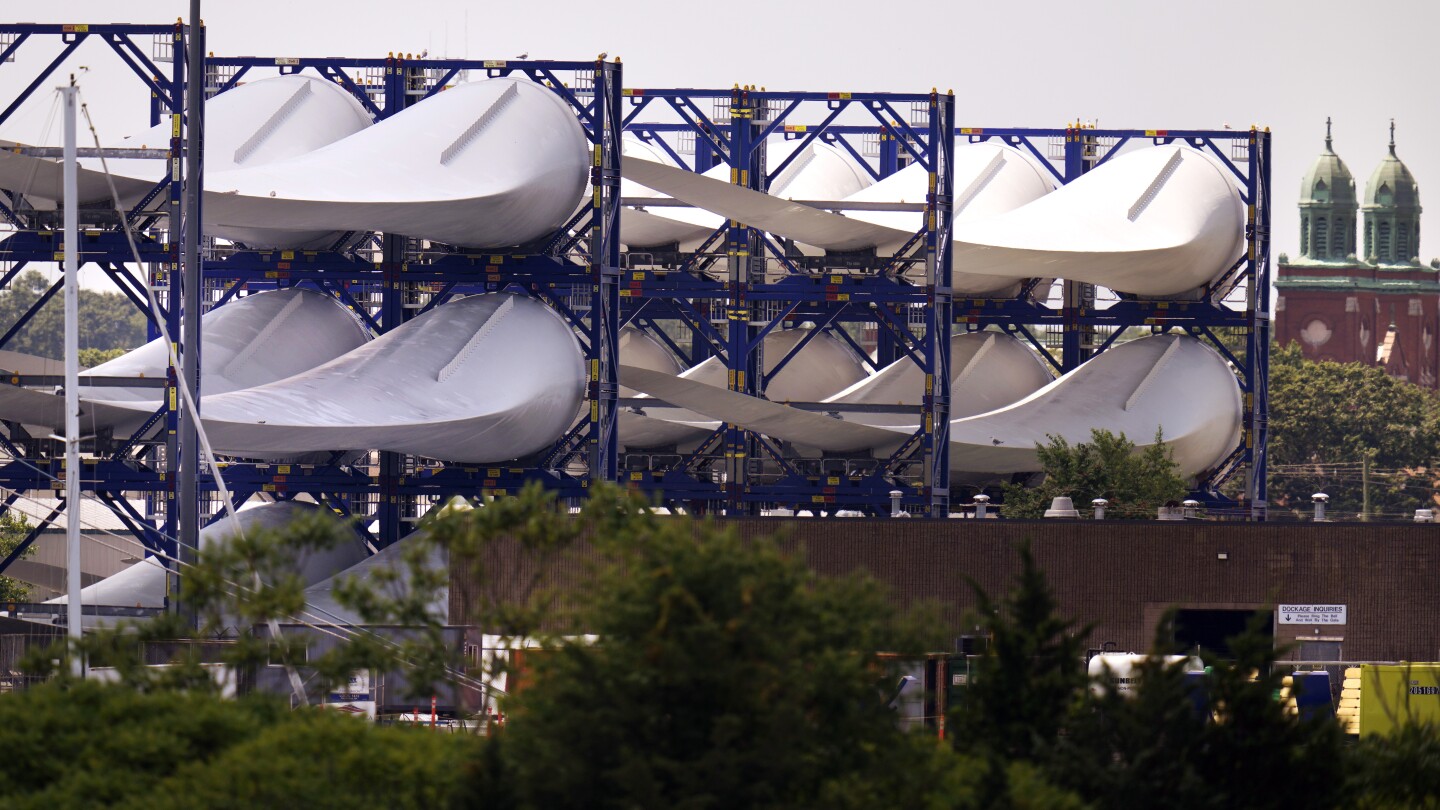For the first time in the United States, turbines are sending electricity to the grid from the sites of two large offshore wind farms.
The joint owners of the Vineyard Wind project, Avangrid and Copenhagen Infrastructure Partners, announced Wednesday the first electricity from one turbine at what will be a 62-turbine wind farm 15 miles (24 kilometers) off the coast of Massachusetts.
Five turbines are installed there. One turbine delivered about 5 megawatts of power to the Massachusetts grid just before midnight Wednesday. The other four are undergoing testing and should be operating early this year.
Danish wind energy developer Ørsted and the utility Eversource announced last month that their first turbine was sending electricity from what will be a 12-turbine wind farm, South Fork Wind, 35 miles (56 kilometers) east of Montauk Point, New York. Now, a total of five turbines have been installed there too.
Anyone who says off shore wind power is ugly or an eyesore should visit some central (thousand oaks to San Luis) California Coast line, and see how majestic the off shore oil rigs are. And be sure to take your shoes off to enjoy the tar covered sands. (Some gasoline will take that right off, never you mind those warnings).
I’m all for these technologies.
-signed a college educated and ex field working marine biologist.
I think they look awesome. But they cost quite a bit more per kWh compared to land based ones.
I think they look awesome. But they cost quite a bit more per kWh compared to land based ones.
Agreed. Offshore wind costs as much as 3.5x the cost of the same wind on-shore in the USA. However, the expensive offshore wind is still cheaper than nuclear power.
- on-shore wind $1,718
- off-shore wind $4,833-6,041
- nuclear $6,695-7,547
edit: corrected label
Absolutely. Nuclear does have the benefit of being able to scale up and down fairly easily though. I don’t recall if offshore + battery backup is cheaper or not. I know it is cheaper for onshore + battery vs nuclear.
Nuclear does have the benefit of being able to scale up and down fairly easily though.
Can you expand on this?
Sure since it was poorly worded. It is good for baseload and being able to increase or decrease output based on demand. Wind can’t do that without a battery.
being able to increase or decrease output based on demand
Can you provide a source for this claim? My info is that this isn’t accurate.
Nuclear is dead.
Is the second bullet point supposed to be off-shore wind?
It was yes. Thanks for catching that. I’ve edited to correct it now.
Also, wind turbines look cool as shit. People are stupid.
go to Texas Gas and Oil rigs for miles and miles.
Many abandoned and leaking. Left to the state (read: you and your tax dollars) to clean up because, oops! The company that owned them has gone under unfortunately.
Article says 1 turbine (5MW) from what will be a 62 turbine wind farm is sending power. The other farm will be 12 turbines (power per turbine not specified). If it’s 5MW for each of 74 turbines, that’s 370MW, not bad, but nowadays multi-GW solar installations are routine. I think there is currently around 1TW of solar deployed worldwide with 500+ GW/year coming online. Of course that’s not baseline power but still, it’s a much larger scale than this wind stuff, and many more TW are needed to displace fossil fuel.
In fairness, it wasn’t stated to be the maximum, just the amount delivered.
So, at the bottom it talks about an 800 megawatt wind farm that I think is the 62 turbine wind farm they’re referring to. That’s a peak of 12.9 megawatts per turbine.








